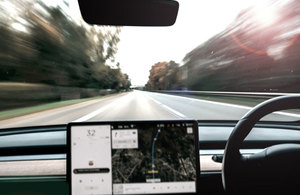The UK has mounted an aggressive program to move towards autonomous driving on public streets and highways that now confronts a serious roadblock: insurance companies. On April 28, the UK Department of Transportation announced that motorists could see self-driving vehicles on British roads for the first time later this year. The statement elicited alarm and drew pushback.

The government set out “how vehicles fitted with Automated Lane Keeping System (ALKS) technology could legally be defined as self-driving, as long as they receive GB type approval and that there is no evidence to challenge the vehicle’s ability to self-drive.”
It said ALKS are a first example of self-driving technology, and will be limited to speeds of up to 37mph on motorways.
Although most insurers see the benefits of automated driving, namely increased vehicle and passenger safety, equating to huge savings in insurance payments, they are worried about the milestones along the way, such as this one.
Specifically, that the lower levels of automation now installed in consumer automobiles such as Teslas could be assumed by their owners to be full-on driverless mode, leading to more accidents in the short term and heightened public fear of such technology. The recent dual fatal accident with a Tesla in Texas is pointed to as an example of this exact hazard.
Pursuant to the recent announcement, the UK is weighing re use of ALKS on for road speeds up to 70 miles (113 km) per hour.
Under debate is whether such systems should be labeled “automated” or not. Terminology matters.
There’s no question that everywhere in the world autonomous driving and advanced driver assistance systems are making giant headway, and that the technology far outstrips the regulations governing it. Level 5 autonomous driving is possible in experimental and research vehicles, but regulators have not coped yet with the capabilities opened up by Level 3, which is installed in vehicles now actually on the roads.
Some say that the term “assisted-driving technology” will keep drivers from letting their attention wander behind the wheel, but this assertion is highly questionable at best. Maybe terminology doesn’t matter all that much.
Thatcham Research, a UK non-profit insurer-funded research centre, has been conducting vehicle testing on cars with ALKS technologies. It finds that they cannot swerve out of lane to avoid obstacles, see pedestrians emerging from cars at roadside, or read road signs. The car can alert the driver to resume control, but with a at high speeds the lag time is considerably less than optimal; indeed, potentially fatal.
Britain’s transport ministry forecasts by 2035 around 40% of new UK cars could have self-driving capabilities, creating up to 38,000 new skilled jobs. The country sees itself as a world leader in advanced and automated driving, and wants to keep its foot on the accelerator.
However, “There is still a lot of work needed by both legislators and the automotive industry before any vehicle can be classed as automated and allowed safely on to the UK roads,” countered Matthew Avery, director of research at Thatcham.
“Automated Lane Keeping Systems (ALKS) as currently proposed by the Government are not automated. They are assisted driving systems as they rely on the driver to take back control.
“Aside from the lack of technical capabilities, by calling ALKS automated our concern also is that the UK Government is contributing to the confusion and frequent misuse of assisted driving systems that have unfortunately already led to many tragic deaths.
“A widespread and effective ongoing communications campaign led by the automotive industry and supported by insurers and safety organizations is essential if we are going to address current and future misconceptions and misuse.”
Thatcham Research and the Association of British Insurers (ABI) believe there are four non-negotiable criteria that need to be met before ALKS can be classified as automated:
• The vehicle must have the capability, and be allowed through legislation, to safely change lanes to avoid an incident
• The vehicle must have the capability to find a “safe harbor” at the side of the road and not stop in a “live” lane
• The systems on the vehicle must be able to recognize UK road signs and this needs to be assured by an independent organization
• Data must be made available remotely through a neutral server for any incident to verify who was “in charge” at the time of the incident – the driver or the vehicle.
“While the insurance industry fully supports the development towards more automated vehicles,” said Mark Shepherd, ABI’s Assistant Director, Head of General Insurance Policy, “drivers must not be given unrealistic expectations about a system’s capability. It is vital that Automated Lane Keeping Systems (ALKS), which rely on the driver to take back control, are not classed as automated, but as assisted systems. By keeping this distinction clear we can help ensure that the rules around ALKS are appropriate and put driver and passenger safety first.
“Thatcham Research has identified some concerning scenarios where ALKS may not operate safely without the driver intervening. These need to be addressed in the consultation.”

